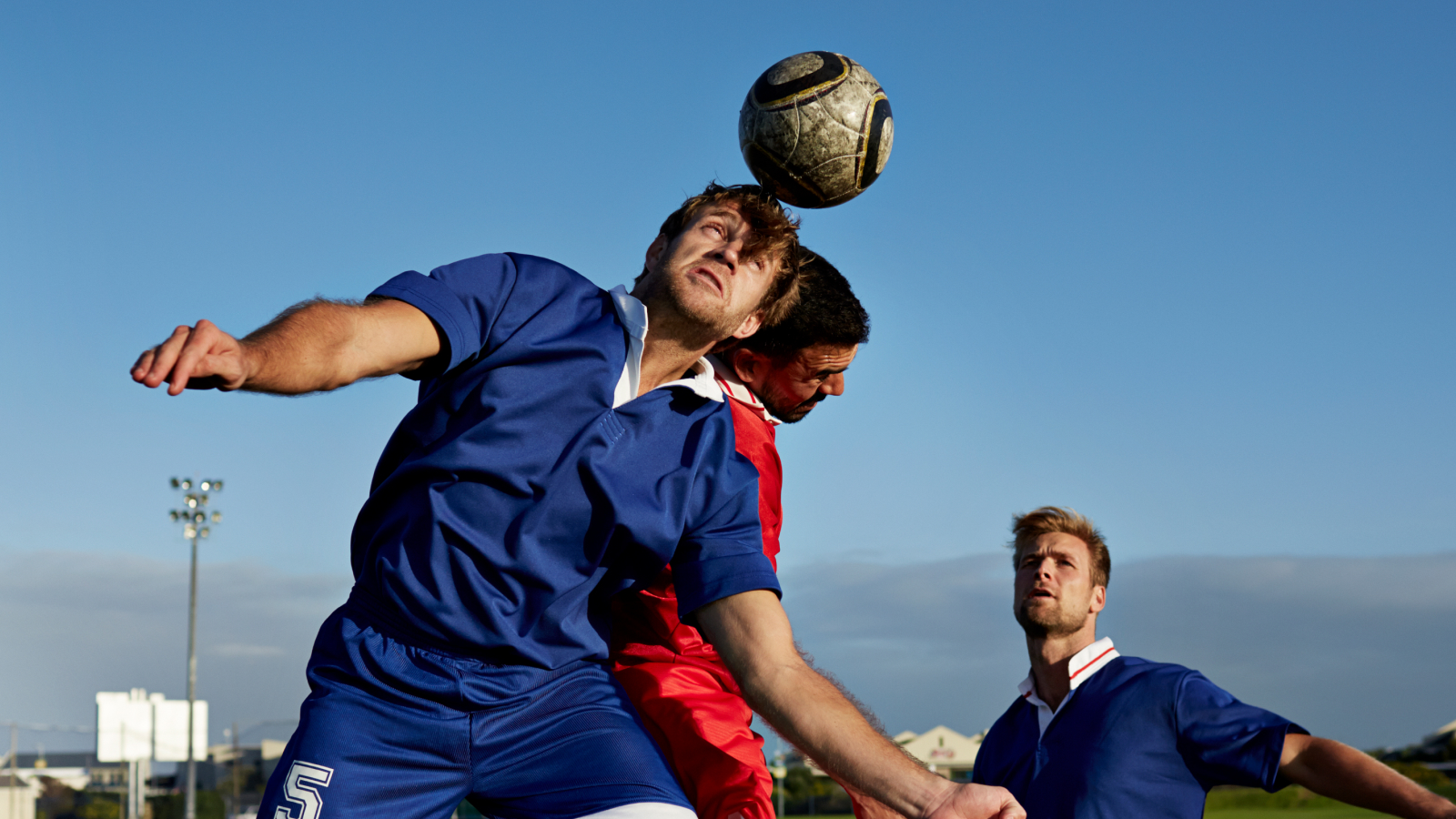Years of repeated head impacts raise CTE risk — even if they're not concussions
Years of hits in sports like football and soccer, even without concussions, can trigger neuron loss and inflammation in the brain, a study finds.

High-impact sports like American football, soccer and rugby often involve repeated blows to the head, and although these impacts don't always cause concussions, a new study shows that even minor hits can damage the brain.
Until now, researchers thought chronic traumatic encephalopathy (CTE) — a degenerative brain disease linked to repeated head trauma that is characterized by mood, behavior, thinking and memory problems — began mainly with the buildup of abnormal protein in the brain. This protein, called tau, normally helps keep neurons healthy, but in its abnormal form, it can kill them. In fact, CTE can only be diagnosed with certainty after death, because at that time, doctors can directly examine tau protein levels in the brain tissue.
But the new findings, published Sept. 17 in the journal Nature, suggest that athletes who experience years of repeated head impacts may lose brain cells and develop brain inflammation long before that abnormal tau buildup occurs. In other words, the disease process may begin earlier than previously thought.
"These findings provide some of the clearest evidence to date that repetitive head impacts can trigger lasting changes in the brain, even before the development of chronic traumatic encephalopathy (CTE)," Brooke Conway Kleven, a postdoctoral scholar of sports data analytics at the University of Nevada, Las Vegas who was not involved in the study, told Live Science in an email.
The study also challenges the common belief that only the number of concussions someone sustains determines their CTE risk.
"In reality, it is the cumulative exposure to head impacts, of any intensity, that drives long-term damage," Kleven said. "Headgear does not substantially reduce the forces transmitted through the brain, so better protection alone may not solve the problem." Policy changes that reduce unnecessary head impacts in sports would be more effective than equipment alone, she said.
Nicholas Murray, an associate professor and neuromechanics laboratory director at the University of Nevada, Reno who was not involved in the study, agrees that helmets and soft-shell helmet covers are not sufficiently protective. Rather, retraining the athletes to limit heading might be more appropriate.
Get the world’s most fascinating discoveries delivered straight to your inbox.
Cumulative damage
Some research also suggests that starting contact collision sports at a younger age increases the risk of brain decline in later life, Murray told Live Science.
In the new study, researchers examined brain tissue from 28 people who were between the ages of 20 and 51 at the time of death. Some had no history of head impacts; some had played contact sports but showed no signs of CTE; and others had early-stage CTE, based on analyses of their brain tissue.
Using a method called single-cell RNA sequencing, the team studied nearly 171,000 individual brain cells. RNA is a molecule that cells use to build proteins, so RNA sequencing can give a sense of which proteins are being made in a given cell; those proteins can then reveal the identity and role of said cell. This approach let the scientists see how repeated head trauma affected different types of cells in the brain.
In the brain's frontal cortex — the area that takes the brunt of head impacts — researchers found a 56% drop in specific neurons that help different brain regions communicate. This loss showed up whether or not athletes had detectable tau protein buildup, a hallmark of CTE.
"This tells us that damage can accumulate earlier and more subtly than previously thought, and that symptoms in athletes may stem not only from protein buildup but also from inflammation and blood flow changes," Kleven said.
The decline was closely tied to the number of years an athlete spent playing American football, regardless of their age at death or degree of abnormal tau buildup. That means that repeated impacts alone may be enough to drive major neuron loss.
And the damage wasn't limited to neurons. The researchers also found that repeated head impacts can disrupt the brain's resident immune cells, called microglia, depleting cells involved in maintaining homeostasis and increasing those involved in inflammation. Head impacts were also tied to inflammation in blood vessel cells and astrocytes, which are star-shaped cells that provide energy to neurons and support the relaying of brain signals.
The researchers suspect that when people are exposed to years of repeated head impacts, blood vessels are strained, oxygen delivery drops and the blood-brain barrier — the shield that normally protects the brain — begins to break down. This may then trigger a feedback loop: Damaged blood vessels activate immune cells and astrocytes, which then become inflamed. Each new hit reactivates the cycle before the brain has time to recover to its baseline, thus turning a short-term injury into a long-lasting problem.
Although the new study paints a worrisome picture, it does have some limitations. For instance, the researchers identified exposure to repeated head impacts through detailed interviews with the donors' next of kin — a method that can be imprecise and prone to error, Murray said. A better approach would be to use brain samples from people with a documented head-impact history, measured quantitatively with instrumented mouthguards or other tools, he said. However, that isn't necessarily possible in retrospective studies.
"The fact that the repetitive head impacts group was deceased at such a young age may indicate many other comorbidities/factors that could contribute to neurodegeneration," Murray pointed out. So, in this instance, the results may be skewed by the study population having other conditions that made these individuals prone to brain-cell loss.
This article is for informational purposes only and is not meant to offer medical advice.

Clarissa Brincat is a freelance writer specializing in health and medical research. After completing an MSc in chemistry, she realized she would rather write about science than do it. She learned how to edit scientific papers in a stint as a chemistry copyeditor, before moving on to a medical writer role at a healthcare company. Writing for doctors and experts has its rewards, but Clarissa wanted to communicate with a wider audience, which naturally led her to freelance health and science writing. Her work has also appeared in Medscape, HealthCentral and Medical News Today.
You must confirm your public display name before commenting
Please logout and then login again, you will then be prompted to enter your display name.
